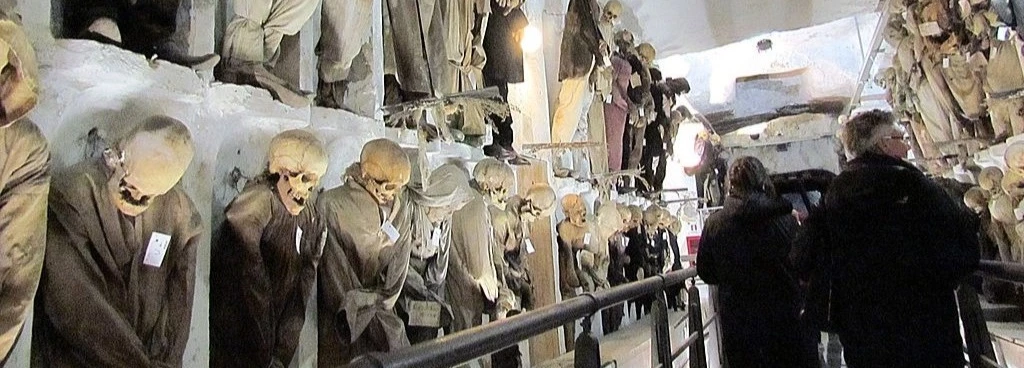
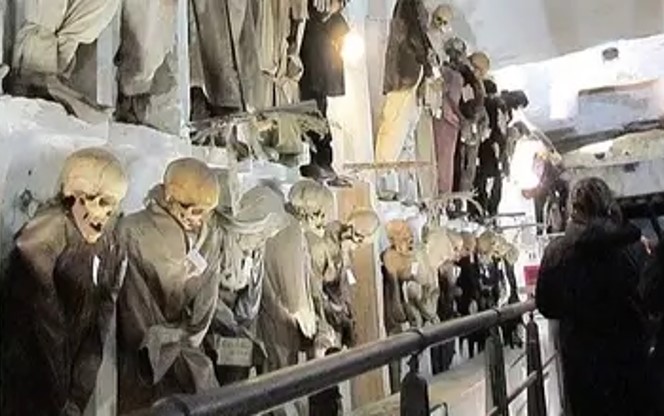
Are you afraid of death? In the Capuchin Catacombs you have the chance to find out. Because: here, only centimetres separate visitors from the "mummies of Palermo".
by: Eugenio Rusignuolo | 02 Sep 2021
In 1534, the Capuchin monks in Palermo built their first monastery in Sicily - near the church of Santa Maria Della (The Lady of Peace). The site was allotted to them when they settled and was considered the worst piece of land. As a burial place for their fellow monks, the monks used a small tomb they had dug under the altar of St. Anne. Deceased monks, wrapped in sheets, were lowered into this burial chamber from above.
But: the community of Capuchins grew larger and larger over time and so the tomb was no longer sufficient in 1597. To solve their space problem, the monks chose the old caves behind the main altar as an alternative area. They decided to excavate them and use them as catacombs for the Capuchin monks. No sooner said than done: the excavations began.
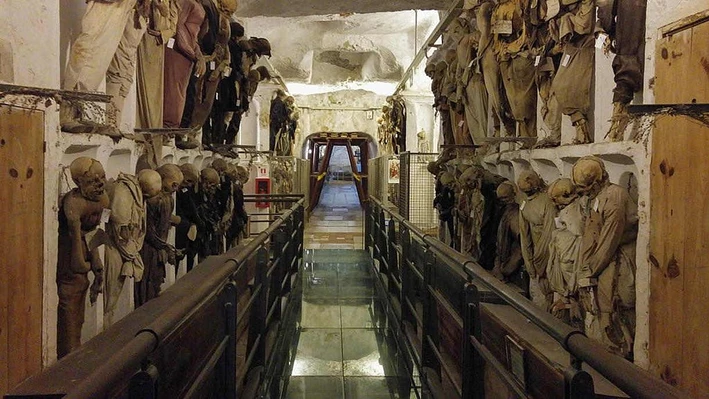
Two years later, the new underground cemetery was ready. However, when the monks opened the old burial chamber to transfer their dead brothers to their new destination, they came across forty-five intact, naturally mummified bodies. The tufa walls of the vault and the draught conditions had prevented the dead from decomposing normally.
The well-preserved bodies were a shock to the locals. They thought it was a sign from heaven and the abbot at the time decided to display the dead as a symbol of their own transience (memento mori).
The first mummy exhibited in the catacombs was that of monk Frate Silvestro da Gubbio. He was laid out in a plain brown robe, with a headdress and a shield that dated his death to 16 October 1599. If you visit this museum cemetery today, you will come across 1.100 mummies, wearing their best robes, pinned to the wall, sitting on benches or lying in open coffins.
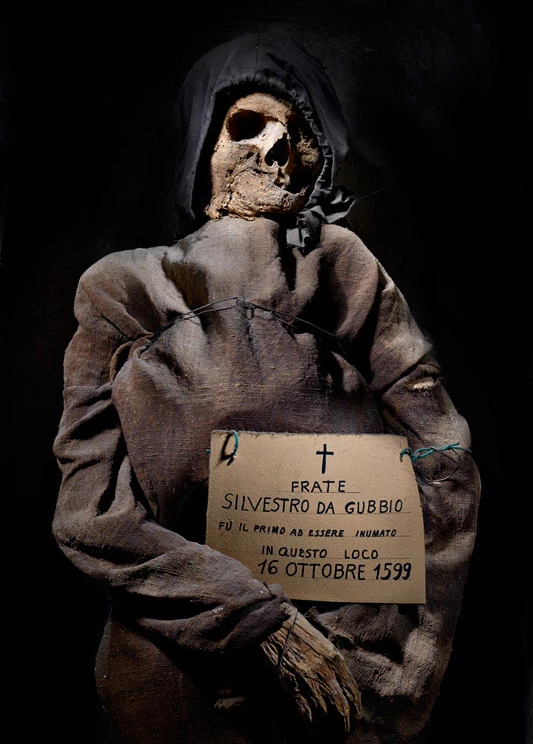
In addition to the 1,100 mummified dead on open display, it is estimated that another 900 bodies lie here in coffins and under grave slabs. The bad land turned out to be a real blessing for the monks. Today, the Catacombe dei Cappuccini form the end of the old town and are a world-famous crowd puller.
And how did the story continue after the first finds? How did thousands of mummies come to be found here? We'll get to that now.
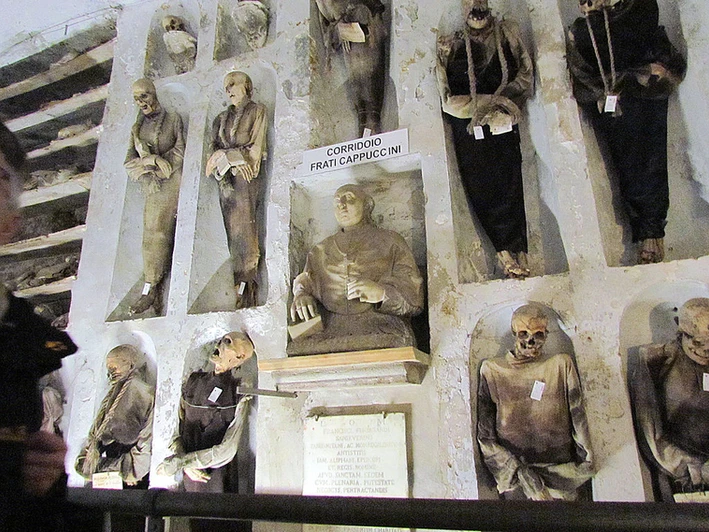
News of the forty-five mummified bodies spread like wildfire, first in Italy, then throughout Europe. Soon the locals began to take an interest in mummification. In 1783, it was decided to admit anyone who wished and could afford a place in the Capuchin crypts.
What had once been the private cemetery for the monks was now available to the public and locals. People from all over the world saw the Capuchin catacombs as the museum of death. The number of mummies increased over time and additional corridors were built to house them.
From the seventeenth to the nineteenth century, thousands of people had themselves buried in the catacombs.As the cost of the entire mummification process was high, only the elite class could afford the ritual. Among the mummies, therefore, are mainly people from royal families, government generals, wealthy Palermitans and celebrities.
List of the famous dead in the Capuchin Crypt:
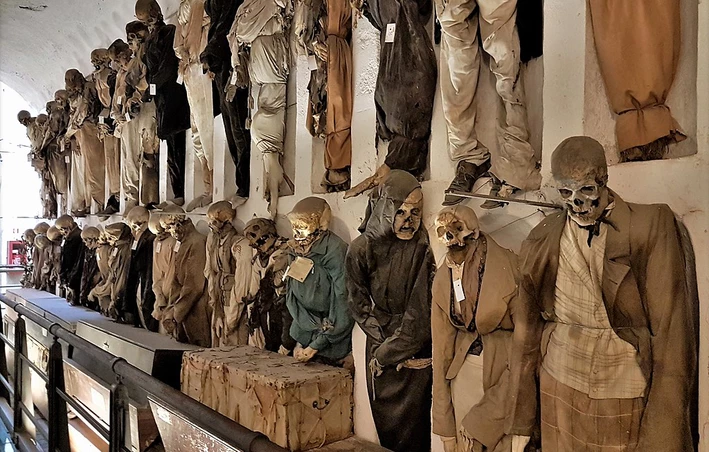
Burial in the Capuchin catacombs had become a status symbol and therefore family members gave themselves large sums of money to secure a burial place for their relatives in the catacombs. Over time, the bodies were arranged according to categories. Thus, there is a corridor for men, women, priests, monks and a corridor for certain professions. In addition, there are two niches, one for virgins and one for children.
Antonio Prestigiacomo has also been placed on one of the walls since 1844. His corpse, embalmed with arsene and mercury, looks down on visitors from a height of 3 metres. During his lifetime, Prestigiacomo, with his height of 1.90m, which was unusual for the time, was considered a womaniser and, according to rumours, died in a duel with a jealous husband. Allegedly, the gigolo wished to find his final resting place in the catacombs, as this was the only way he could continue to look at women even in death.
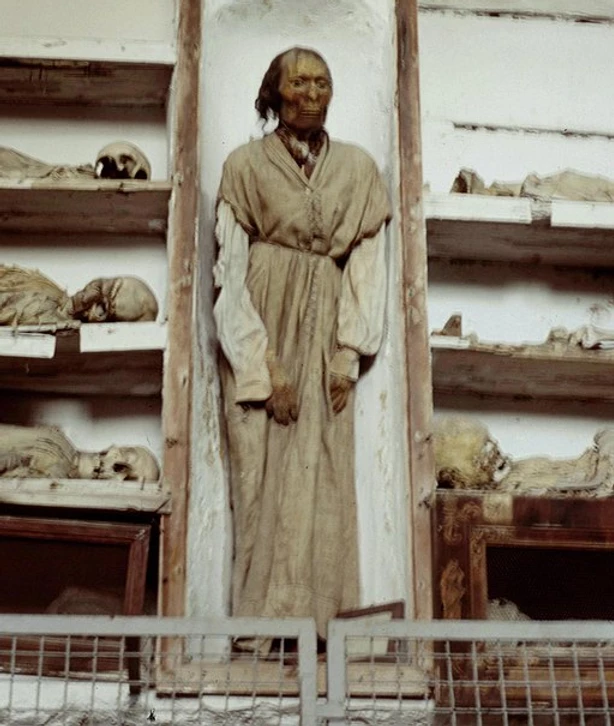
In the list of the monastery's famous mummies, the most famous and - sorry, Antonio, but it's not you - most beautiful mummy is still missing: a child's corpse. It is so extraordinary that it is even kept separately from the other children in a chapel. We will talk about her later.
Most of the Palermo mummies in the Capuchin Catacombs are the result of natural preservation. This is based on dehydration. Once dehydrated, the decay of human tissue by bacteria and putrefactive agents is greatly reduced. If the first corpses were mummified because of the special climatic conditions under the catacombs, the monks later proceeded quite deliberately.
Immediately after death, the bodies were kept in a preparation room ("colatoio"). Here, the internal organs of the dead were removed and straw was placed in their place, which was supposed to promote the drying out of the bodies.
The corpses were then kept in a supine position on terracotta belts. In this way, the liquid could completely escape from the bodies. The bodies were stored in this way for a period of one year under optimal temperature and humidity.
At the end of the preservation year, the bodies were washed with vinegar and only then brought back into contact with air. Finally, the mummified bodies were dressed and displayed in the wall niches of the catacombs.
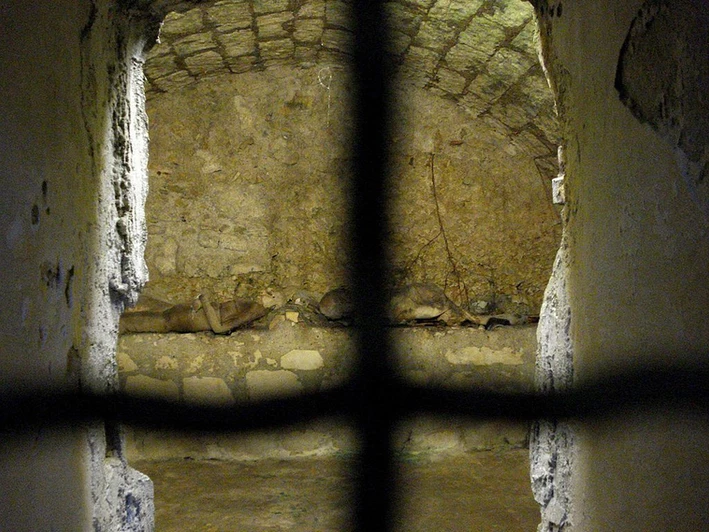
There are only a few cases where the monks of Palermo used artificial mummification to preserve corpses. This involved injecting chemicals into the dead bodies to stop the decomposition process. It is known that the mummies created by artificial mummification are the best preserved.
The artificially mummified and most famous body in the Capuchin Catacombs is that of a two-year-old girl, named Rosalia Lombardo. She is known as the "sleeping beauty of Sicily". Rosalia was born in 1918 in the wealthy home of a general. Unfortunately, the Spanish flu struck very early and she died in 1920 at the age of just 2.
Her father, an influential figure in the city, was inconsolable and decided that his idolatrously loved daughter should outlive her. Thanks to his influence and financial means, little Rosalia's body was mummified. Today she rests in the Chapel of Santa Rosalia in a glass coffin, adorned with a yellow ribbon in her hair.
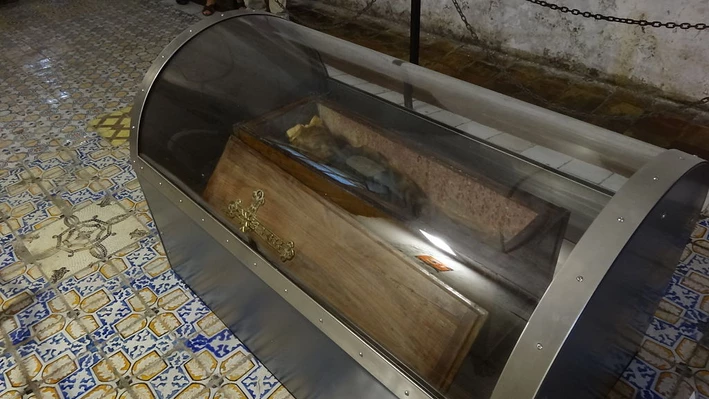
When people see her, they find it hard to believe that she is no longer breathing, so well preserved is she. Her face is still completely preserved, which is unique in the world.
The embalmer Alfredo Salafia was responsible for this. His long-kept secret of preservation was only revealed in 2009, when his estate papers were found. In it, the chemist revealed his formula and it turned out that he replaced the blood of little Rosalia with a mixture of glycerine, formaldehyde, salicylic acid, which he dissolved in alcohol, zinc sulphate and chloride.
Rosalia Lombardo was the last to be buried in the Capuchin crypt and the only one to use Salafia's innovative formula. Before that, artificial mummification with arsene and mercury had been practised. Actually, mummification had already been forbidden since 1881, but an exception was made for little Rosalia and so today she is considered the "most beautiful mummy in the world".
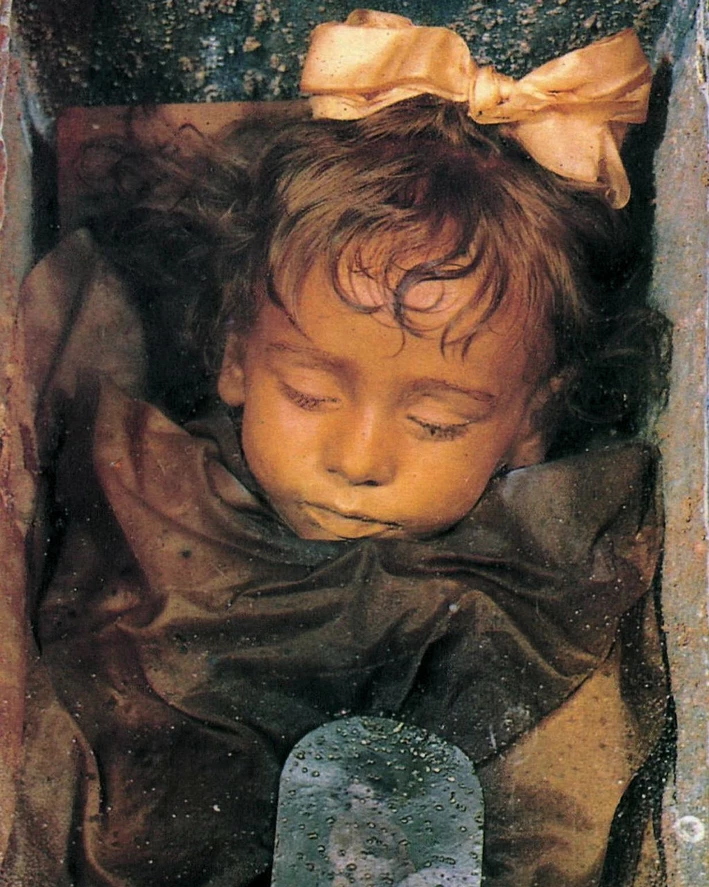
Important note and a tip:
Pssst. As soon as you enter the underground cemetery, keep quiet and leave your camera in your bag.
The photo ban is out of respect for the dead. Rightly so, in our opinion, because otherwise impious selfie scenes could hardly be avoided.
If you want to turn up the goosebumps, visit the Capuchin Crypt during the week and as early in the day as possible, when there are few visitors. With a bit of luck, you'll be able to walk through the corridors all by yourself - with the dead at your side.
The Capuchin Catacombs are meant to remind visitors of the transience of one's life and are an eerie experience worth seeing during your stay in Palermo. The fascination that emanates from them is hard to describe, you have to experience it for yourself when the queasy feeling rises in you as soon as you enter the underground vaults.
If the Palermitans had not used the catacombs as air raid shelters during the Second World War and if parts of them had not been destroyed by bombing, most of the 8,000 mummies that were once placed there would still be there today. What remains, however, is the world's largest collection of mummies with over 1,000 dead.
If you are looking for an experience that will add an impulsive contrast to your stay in sunny, lively Palermo - the Capuchin Catacombs of Palermo are the place for you!

Many travellers want quality accommodation with an authentic atmosphere. At Boutique BnB Dolcevita we offer modern rooms and warm service so you can feel like a local for a while.
More info on the Boutique BnB Dolcevita